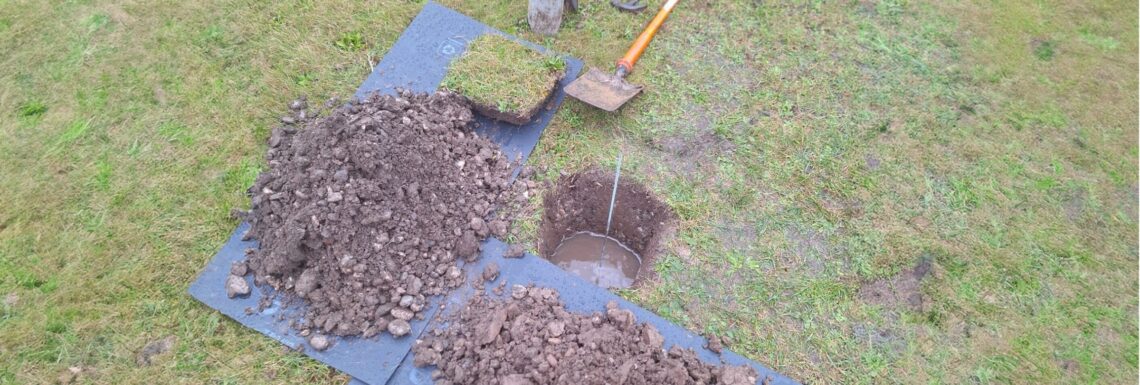What is a Percolation Test?
A percolation test, also known as a ‘perc test’, is a crucial part of the process when installing or replacing a soakaway or drainage field. The test determines the rate of water absorption into the ground. The test measures how long it takes a specific amount of water to drain away from a saturated hole that has been dug into the ground. The results of the test help determine the most suitable location for the drainage field to be installed.
When is a Percolation Test Needed?
A percolation test is required when planning to install or replace a drainage field or soakaway at a property. Building Control often requires percolation test results to validate that the soil conditions are satisfactory and the soakaway has been tailored to the specific site’s needs.
For properties not connected to the mains sewer system, they typically have an off-mains drainage system like a cesspit, septic tank or sewage treatment plant.
If the property has a septic tank or sewage treatment plant, the waste water usually flows to a soakaway system like a drainage field or directly to a watercourse. It’s crucial to be aware of the General Binding Rules as sewage discharges must adhere to specific regulations. Learn more about the regulations here.
What does a Percolation Test Involve?
Here’s an overview of the steps involved when conducting a percolation test:
- Site Preparation: Before conducting the test, the site must be properly prepared to get an accurate result. This includes locating the proposed drainage field or soakaway location and clearing it of any debris or vegetation that could interfere with the test and result with inaccurate readings. We also recommended not performing the test in the following weather conditions; heavy rain, frost, snow and drought.
- Digging Test Holes: Multiple test holes are dug in the ground of the proposed drainage field area. These holes are usually 300ml – 700ml deep by 300ml sq. The number of holes will depend on the size of the proposed drainage field.
- Soaking Test Holes: Each hole is filled with water, allowing it to saturate the surrounding soil. This step ensures that the soil is fully saturated before the percolation test begins.
- Drainage Test: Once the holes are fully saturated, they are filled with a measured volume of water and the time it takes to drain from the holes is recorded. This process is usually repeated at least twice to ensure the accuracy of the data.
- Calculating the Percolation Rate: The percolation rate is calculated by dividing the volume of water by the time it takes for the water to drain. The result is usually expressed in minutes per inch or minutes per centimetre.
- Interpreting the Results: The results of the percolation test are used to determine the size and design of the drainage field or soakaway. In general, faster percolation rates indicate soil that can handle larger volumes of water, while slower rates suggest soil that may require a larger drainage field or different drainage system.
Contact Us Today
Explore CountyClean Group’s diverse services today, from percolation tests to civil engineering solutions. Our dedicated team is here to tailor every project to your needs. Reach out to us via phone, email or our contact form to get started

